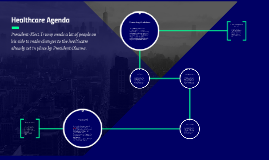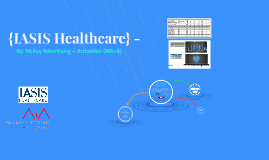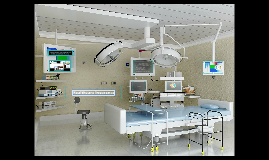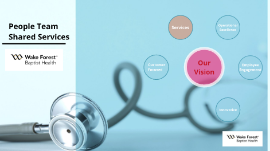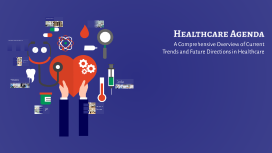Healthcare Agenda
Transcript: Public Healthcare System Private Healthcare System Public healthcare systems are funded and operated by the government, aiming to provide universal access to medical services without direct charges at the point of care. This model emphasizes equitable healthcare access but may face challenges like long wait times and limited resources. Private healthcare systems are funded through private payments and insurance, offering quicker access to services and often a wider range of treatment options. However, this model can lead to disparities in access based on income, as not everyone can afford private insurance or out-of-pocket costs. Embracing Innovation for Better Healthcare The future of healthcare hinges on the adoption of innovative technologies and practices that enhance patient care and improve health outcomes. Key areas of focus include integrating advanced technologies like telemedicine and AI, along with prioritizing a patient-centered approach that addresses the unique needs of individuals. Healthcare Agenda Evolution of Healthcare Policies and Practices A chronological overview of significant events that shaped modern healthcare. 1960s 2000s 19th Century The establishment of Medicare and Medicaid in the U.S. expanded access to healthcare for vulnerable populations. The rise of electronic health records (EHR) began to transform healthcare delivery and patient information management. The establishment of public health systems and the introduction of vaccines marked a significant advancement in healthcare. 1940s Present Day A Comprehensive Overview of Current Trends and Future Directions in Healthcare The introduction of antibiotics transformed treatment options and drastically improved patient outcomes. Current focus on patient-centered care and the integration of technology in healthcare continues to evolve practices. Cost-Effectiveness Analysis Cost-effectiveness analysis is a method used to compare the relative costs and outcomes of different healthcare interventions. It helps healthcare providers allocate resources more efficiently and make informed decisions about which treatments to fund and implement. Maximizing Health Outcomes Understanding Cost-Effectiveness in Healthcare Investing in cost-effective healthcare solutions can lead to better health outcomes while maximizing the use of limited resources. This approach ensures that patients receive the most effective treatments within budget constraints, improving overall health system sustainability. Key Metrics in Cost-Effectiveness Cost-effectiveness is often evaluated using metrics such as quality-adjusted life years (QALYs) and incremental cost-effectiveness ratios (ICERs). These metrics help quantify the value of healthcare interventions relative to their costs, informing policy decisions. Ensuring High-Quality Healthcare Services High-quality healthcare services lead to improved patient satisfaction, better health outcomes, and enhanced trust in healthcare providers. This involves adherence to best practices, continuous monitoring, and a focus on patient-centered care. Transforming Health Outcomes through Strategic Priorities The healthcare agenda is a comprehensive framework that identifies key priorities and strategies aimed at enhancing health outcomes within a community. It serves as a roadmap to guide healthcare initiatives, ensuring that resources are allocated effectively to meet the needs of the population. Access to Care Access to care is critical in ensuring that every individual has the opportunity to receive necessary medical attention without any obstacles, such as financial constraints or geographical barriers. Barriers to Access Quality of Services Barriers to access can include geographical location, financial constraints, and availability of services. Ensuring that healthcare facilities are accessible to all is a fundamental goal of the healthcare agenda. Key Priorities in Healthcare Quality of services directly correlates with patient satisfaction and improves health outcomes. It encompasses the effectiveness, safety, and patient-centeredness of healthcare provided. Telemedicine Solutions Enhancing Access to Care Telemedicine has emerged as a vital solution to enhance access, especially in remote areas. It enables patients to receive consultations and follow-ups without needing to travel long distances. Cost-Effectiveness Outreach Programs Outreach programs play a crucial role in improving access by connecting underserved populations with essential health services. These programs can include mobile clinics and community health workers who provide services directly in the community. Cost-effectiveness is essential for sustainable healthcare systems. It assesses the balance between the costs of healthcare interventions and the health outcomes achieved, ensuring that resources are utilized efficiently.






